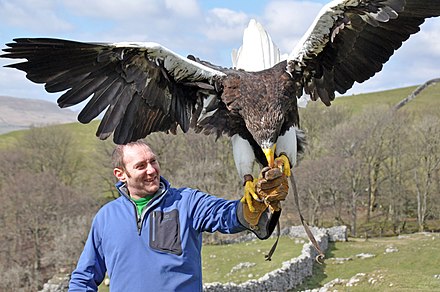Steller’s Sea Eagles are majestic birds of prey that primarily inhabit the coastal regions along the northeast coast of Russia, particularly the Kamchatka Peninsula. These impressive eagles are known for their massive size, impressive wingspan, and unique hunting behaviors.
Geographical Range and Breeding Grounds
Steller’s Sea Eagles are found in a relatively limited geographical range, primarily in the coastal areas of the Russian Far East. Their breeding grounds are located along the coasts and surrounding islands of the Sea of Okhotsk and Bering Sea, in the far eastern regions of Russia.
During the winter months, these eagles can also be found in China, North Korea, South Korea, and Japan, as they migrate from their breeding grounds to seek out open water and abundant food sources.
Nesting Habits and Habitat Preferences
 Image source: stellers sea eagle
Image source: stellers sea eagle
Steller’s Sea Eagles are known to build their nests in a variety of locations, including:
- Immense trees
- Cliffs or rocky ledges
- Near rivers, estuaries, deltas, and river mouths
These eagles prefer to nest in areas that provide easy access to their primary food sources, such as fish, crabs, shellfish, and other marine life. The proximity to water bodies and the availability of suitable nesting sites are crucial factors in their habitat selection.
Feeding Habits and Prey
Steller’s Sea Eagles are primarily piscivorous, meaning they feed mainly on fish, particularly salmon. However, they are also known to consume a variety of other prey, including:
- Crabs
- Shellfish
- Squid
- Small animals
- Ducks
- Gulls
- Carrion
These eagles are skilled hunters, using their powerful talons and sharp beaks to capture their prey. They are known to hunt from a perch or by diving from the air, snatching their prey from the water or the ground.
Migratory Patterns
Steller’s Sea Eagles are migratory birds, with their range extending into China, North Korea, South Korea, and Japan during the winter months. Some individuals migrate from their breeding grounds to these areas, while others simply move to open water as winter approaches.
The migration patterns of Steller’s Sea Eagles are influenced by the availability of food sources and the need to find open water during the colder months. These eagles are known to travel long distances to reach their wintering grounds, often covering hundreds of kilometers.
Conservation Status and Threats
Steller’s Sea Eagles were once threatened by the demand for their feathers, which were highly prized. However, these magnificent birds are now protected throughout their range, especially in Japan, where they are revered as the “O-washi” or “great eagle.”
Despite their protected status, Steller’s Sea Eagles still face some threats, including:
- Habitat loss due to human development and deforestation
- Pollution and environmental degradation in their coastal habitats
- Illegal hunting and poaching
Ongoing conservation efforts, such as monitoring populations, protecting nesting sites, and raising awareness, are crucial to ensuring the long-term survival of Steller’s Sea Eagles.
Conclusion
Steller’s Sea Eagles are truly remarkable birds, with their impressive size, unique hunting behaviors, and specialized adaptations to the coastal regions of the Russian Far East. Understanding their habitat preferences, feeding habits, and migratory patterns is essential for their effective conservation and protection.
By exploring the intricate details of Steller’s Sea Eagle habitat, we can gain a deeper appreciation for these magnificent birds and the fragile ecosystems they call home.

